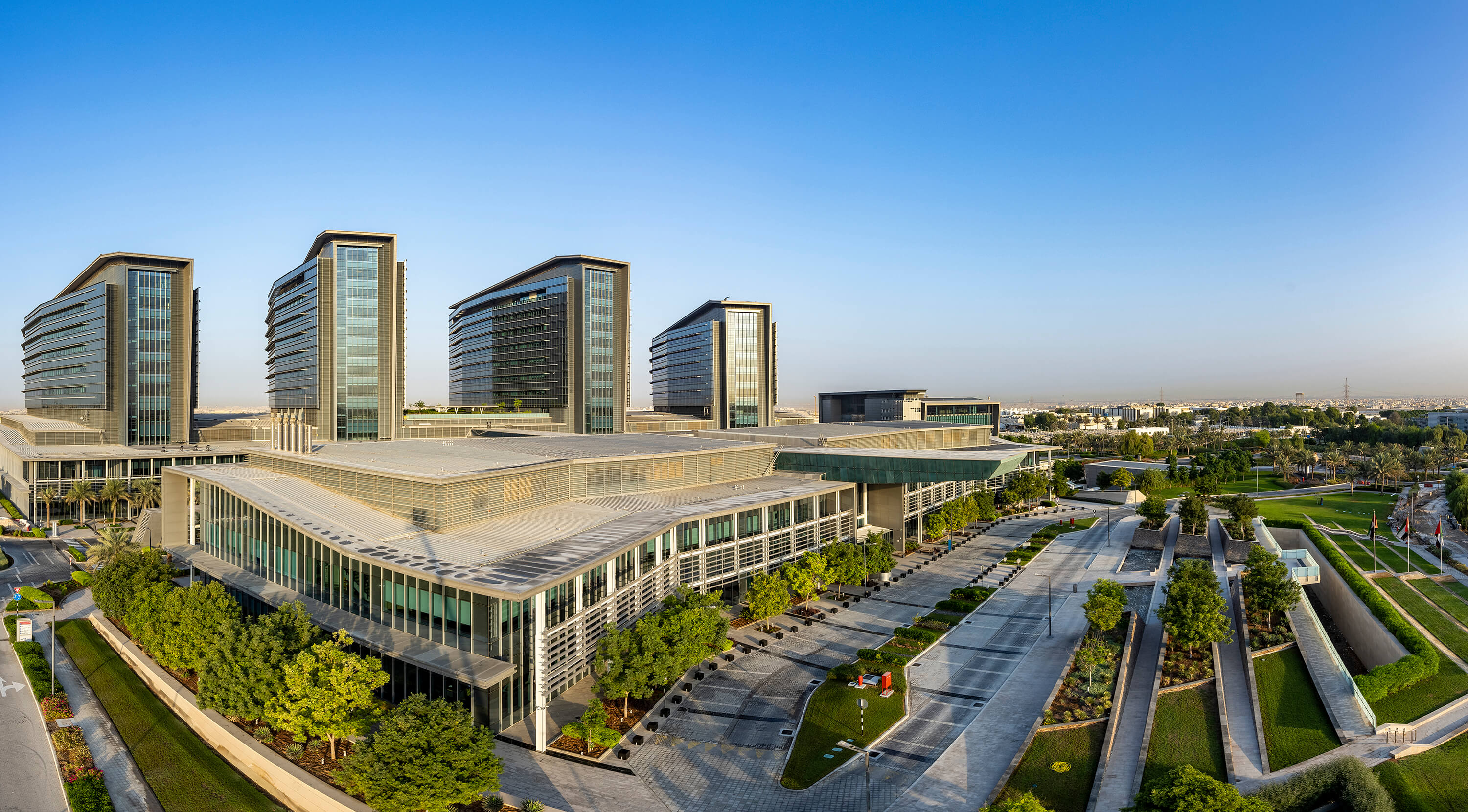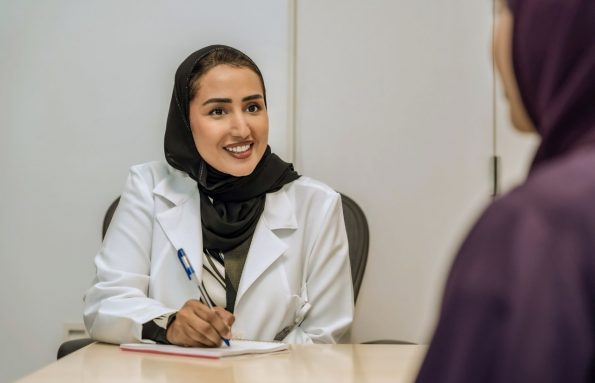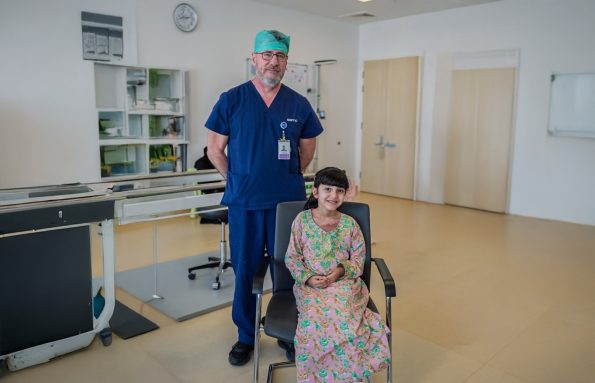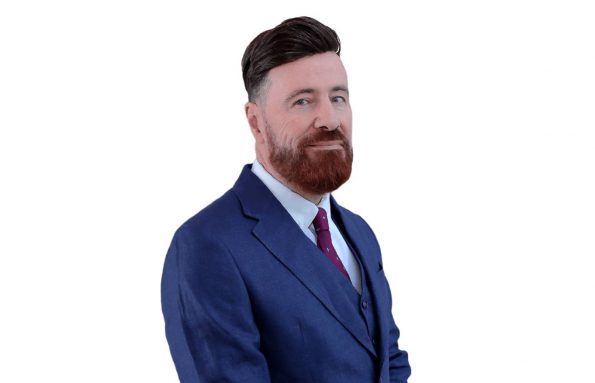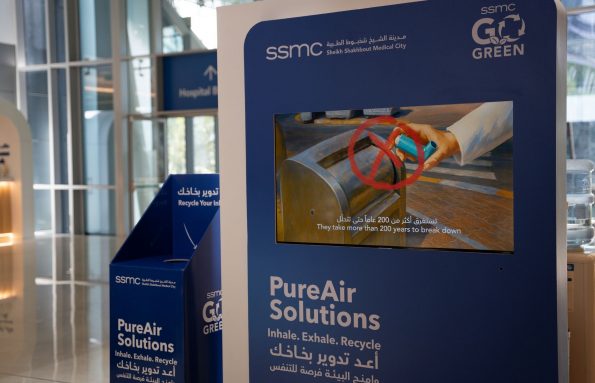Abu Dhabi, United Arab Emirates. October, 2022 – Sheikh Shakhbout Medical City (SSMC), one of the UAE’s largest hospitals and a joint-venture partnership between Abu Dhabi Health Services Company (SEHA) and Mayo Clinic, recently performed an entire abdominal aorta replacement to save the life of a 35-year-old woman who had suffered an aneurysm in her abdomen.
An abdominal aortic aneurysm is an enlarged area in the lower part of the aorta, a major vessel that supplies blood to the body. The aorta runs from the heart through the center of the chest and abdomen and is the largest blood vessel in the body, so a ruptured abdominal aortic aneurysm can cause life-threatening bleeding.
Analyn Pisao, a Filipina, was rushed to SSMC’s emergency department suffering from what was initially thought to be severe appendicitis. However, a CT scan indicated she had a ruptured abdominal aortic aneurysm, which was 9 cm in size. She was assessed by Dr. Mohamed Baguneid, consultant and chair of the Vascular Surgery Division at SSMC, who has over 27 years of clinical experience as a vascular and endovascular surgeon including leading one of the largest practices managing aortic aneurysms and carotid surgeries in the UK before moving to the UAE. Alongside his highly skilled team, Dr. Baguneid reacted immediately to prepare for the advanced procedure for Analyn. Thanks to SSMC’s cutting-edge diagnostic equipment, treatment technologies and world-leading multidisciplinary expertise, she received complex integrated care promptly.
“The patient came to us with low blood pressure and was suffering from severe pain. Essentially, the main aorta in her abdomen had ballooned out and ruptured, causing bleeding,” said Dr. Baguneid. “Given the complexity of her condition and the need for immediate intervention, our team had to mobilize very quickly, so within half an hour from the diagnosis, we had a clamp on her aorta to stop the bleeding. Once we were able to do that, we proceeded with a laparotomy and replacement of the entire aorta with an artificial graft inside her abdomen,” he added.
Unlike more well-known cardiovascular diseases, such as coronary heart disease and stroke, aortic aneurysms are less common and usually affect people aged 70 years and above. Some risk factors, such as being elderly, gender differences, hypertension, smoking, and genetic or metabolic abnormalities, can contribute to aortic aneurysm development.
Dr. Baguneid explained: “Unfortunately, half of the people who suffer a rupture of an aortic aneurysm die before they even reach the hospital, and only half of those that make it to a hospital will survive, making this a life-threatening condition. Generally, these types of aneurysms are less frequent in the UAE than in other parts of the world, like Europe and the United States. This might be due to the relatively young population here”.
“This case was very rare and unusual. However, as the patient was only 35 years old with no history of smoking, and thanks to the timely diagnosis, I’m pleased to say that she recovered well and was able to return home after five days following the procedure”, he added.
Speaking on her experience, Ms. Pisao said: “I was suffering from so much pain that I honestly thought my life would be over at any moment – that’s how frightened I was. When I went through the procedure with Dr. Baguneid, I couldn’t believe it was over; I now feel a lot better and am especially relieved. The doctor told me I wouldn’t have to worry anymore, and I am thankful to him and the hospital staff for their efforts and saving my life.”
When it comes to screening, ultrasounds are usually utilized and can detect aneurysms with 99.9% accuracy. If small, they are then followed up with regular scans until the aneurysm reaches 5.5 cm in size, whereby an elective procedure is recommended.
Dr. Matthew Gettman, chief medical officer at SSMC, said: “Our staff work to provide integrated human-centric and compassionate care at all times. SSMC is constantly elevating the provision of health care services and standards by bringing to the region Mayo Clinic’s unique model of care. We are committed to becoming a regional destination medical center for complex care, such as the above case, and a Category of One provider in health care. To achieve this goal, we use state-of-the-art technology, key innovative procedures, and techniques to improve the overall patient journey.”

